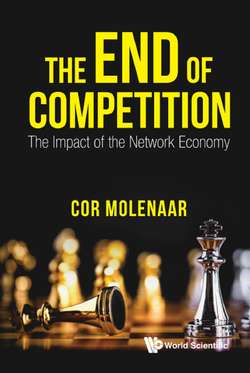Читать книгу End Of Competition, The: The Impact Of The Network Economy - C N A Molenaar - Страница 29
На сайте Литреса книга снята с продажи.
Do the Traditional Competition Models Restrict Innovation?
ОглавлениеThe old view that a business makes products and then sells them within the supply chain is no longer so relevant. Certainly not for the so-called non-daily products and for applications within the business-to-business (B2B) market. (Say’s law: supply creates its own demand, should actually be: demand creates its own supply.) Thanks to the enormous knowledge and information that purchasing parties can access, they can be much more selective in their purchasing decisions. Organisations should no longer have a sales focus but a purchasing focus. They should no longer first produce a product and then try to find a market for it. They should instead start with the customer: what do they want, who are they, how have they changed and what motivates their decisions. This shift from a production orientation to a customer orientation results in the following:
• companies that gear products better to the needs of (often individual) customers;
• greater satisfaction;
• the creation of loyalty;
• a more concentrated strategy for businesses.
I will take a closer look at this customer focus when I later analyse the model of Treacy and Wiersema as well as during the assessment of various models.
Porter observes the market and product-related factors. He looks at, for example, the availability of replacement products, but does not ask himself whether these products lead to the same loyalty with consumers (customers). Nor whether preferences in the future will change, allowing a company to prepare for this change (just look at the examples of both Kodak and Nokia). This is actually the general criticism levelled at Porter’s model as well as other competition models that are based on the supply. In the traditional market, which is very dynamic and characterised by a dynamic demand, different conditions apply. Companies should take advantage of the opportunities available, but they are constantly on the defensive. This results in a less effective strategy. There are plenty of examples of this strong focus on products and traditional markets, such as Kodak, Nokia, retailers on the high street and travel agencies. The traditional strength of companies is collaboration in a network based on one’s own added value. A purchase/customer focus based on engagement requires a different type of strategy (customer-oriented), a different type of organisation (agile, flexible) and a different supply proposition and value exchange (based on customer needs). By now focusing on increasing their value, companies have to dispose of divisions that do not contribute to this. Traditional outdated competition models, which are still based on supply, stand in the way of innovation and change. If companies continue to hang on to those competition models for too long, they will quickly fall behind the competition and find themselves separated from the new entrants by a chasm that will be impossible to bridge.
